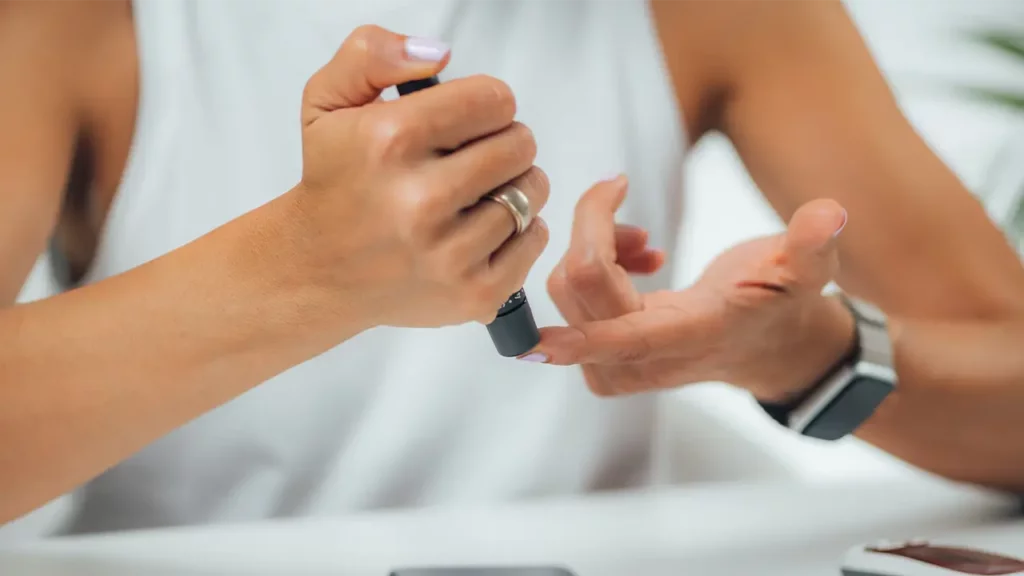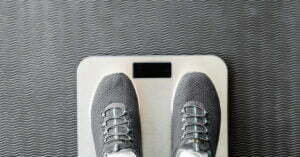Diabetes is a prevalent chronic condition in the United States, affecting approximately 1 in 10 Americans, which translates to over 37 million people. Many diabetic patients, around 90-95%, have type 2 diabetes, which typically develops in people over the age of 45.
Managing diabetes effectively is crucial to prevent complications and maintain good health, and remote patient monitoring (RPM), which includes diabetes remote monitoring, can play a vital role in achieving these goals.
What is Diabetes Remote Monitoring?
Remote diabetes monitoring is a form of telehealth service that utilizes digital health tools and diabetes devices to help people with diabetes better manage their condition effectively. This service is beneficial for patients with type 1 diabetes, type 2 diabetes, gestational diabetes, or diabetes mellitus, as it enables healthcare providers (HCPs) to remotely collect and analyze patient data such as blood sugar levels, medication adherence, and other vital signs.
By using remote monitoring, healthcare professionals can intervene and make necessary adjustments to a patient’s diabetes control plan in real-time. This is particularly useful for patients who may not have easy access to primary care, as remote monitoring can provide a convenient and accessible means of managing their condition.
Compared to usual care, diabetes remote monitoring has been shown to improve diabetes control and health outcomes. It allows patients to receive more personalized care and support, leading to better management of their diabetes.
Benefits of Remote Patient Monitoring for Diabetes Care
RPM refers to the use of technology to monitor patients’ health and medical information outside of traditional healthcare settings. Here are some benefits of remote monitoring for individuals with diabetes:
- Improved Access to Care: Remote health monitoring enables diabetes patients to receive care from the comfort of their homes, without the need for frequent trips to healthcare facilities. Remote health monitoring enables the provision of care for diabetic patients from the comfort of their homes, eliminating the need for frequent trips to healthcare facilities. This type of monitoring is particularly beneficial for patients living in remote or underserved areas.
- Increased Patient Engagement: Diabetes monitoring at home help patients to take an active role in managing their condition by regularly tracking their blood glucose levels and receiving feedback from their health professionals This can lead to improved self-care behaviors and better overall health outcomes.
- Timely Interventions: With remote monitoring, care providers can detect changes in patient data in real-time and intervene promptly when necessary. This can help prevent complications and reduce the need for hospitalizations and emergency room visits.
- Cost-Effectiveness: RPM can result in cost savings for both patients and providers. By reducing the need for frequent in-person visits and hospitalizations, remote monitoring can lead to significant cost savings.
- Convenience: Monitoring remotely is convenient for patients, as they can easily monitor their condition and communicate with their health professionals from their homes. This is especially beneficial for patients with mobility or transportation issues.
In summary, RPM is an innovative solution for diabetes management that offers several benefits to patients and healthcare professionals. By leveraging advanced technologies, health providers can provide more personalized and proactive care, leading to better outcomes for their patients.
How Remote Monitoring for Diabetes Works
Remote monitoring in diabetes management involves a step-by-step process that includes the use of various types of connected devices, such as blood glucose meters, insulin pumps, and continuous glucose monitors. Here are the steps involved in diabetes remote monitoring:
- Patient Data Collection: Remote monitoring for diabetes starts with the collection of health data, such as blood sugar levels, medication adherence, and other vital signs. This is typically done using medical devices that are connected to the patient’s mobile device or a dedicated monitoring device.
- Data Transmission: Once the health data is collected, it is transmitted to a secure cloud-based platform. This platform provides HCPs with access to the health data in real-time, allowing them to monitor and manage the patient’s condition remotely.
- Data Analysis: HCPs use data analysis tools to review the patient data and identify any trends or patterns that may indicate a change in the patient’s condition. This analysis allows care providers to make informed decisions about the patient’s care and treatment plan.
- Patient Feedback: health professionals can provide patients with feedback on their data, including recommendations for changes to their treatment plan, medication adjustments, and lifestyle modifications. This feedback can be provided through secure messaging or video calls.
Here are some of the diabetes home monitoring devices that are commonly used in diabetes care:
- Blood Glucose Meters: These devices are used to measure the patient’s blood sugar levels. They typically use a lancet to prick the patient’s finger and collect a small blood sample, which is then analyzed by the monitor.
- Insulin Pumps: These devices are used to deliver insulin to the patient’s body. They typically include a small pump that is attached to the patient’s body and a cartridge of insulin that is inserted into the pump.
- Continuous Glucose Monitors: These devices are used to continuously monitor glucose levels of patients. They typically include a small sensor that is inserted under the patient’s skin and a transmitter that sends the data to a monitoring device.
In summary, diabetes remote monitoring program involves the use of various devices to collect health data, which is then transmitted to HCPs for analysis and feedback. This approach allows for more personalized and proactive diabetes care, leading to better outcomes for patients.
DrKumo Secured Remote Patient Monitoring Solution for Diabetic Patients
RPM is a technology that enables healthcare professionals to remotely monitor patients’ health status and vital signs in real-time. This technology can be used for chronic disease management, acute care, post-operation, and hospital care at home. DrKumo offers a state-of-the-art RPM program that can assist in diabetes management. DrKumo is HIPAA compliant and through its secure cloud-based platform, the privacy and security of patients’ data is ensured.
With DrKumo, HCPs can remotely monitor patients’ blood sugar levels, medication adherence, and other vital signs in real-time. Patients can also use the system to track their progress and receive feedback from their health professionals. DrKumo’s user-friendly interface and mobile app make it easy for patients to access their data and communicate with their care providers.
By leveraging advanced technologies such as artificial intelligence, machine learning, and predictive analytics, DrKumo RPM program aims to improve diabetes care management and outcomes for both patients and providers. It helps patients manage their health status more effectively, and HCPs can provide personalized and proactive care. DrKumo is revolutionizing the way people access quality healthcare across the world.
Takeaways
Remote care for people living with diabetes has the potential to improve patient engagement, adherence to diabetes treatment plans, and glycemic control. Patients enrolled in remote diabetes monitoring programs have reported better management of their diabetes and increased confidence in their ability to manage the disease. This approach has been particularly beneficial for patients with poorly controlled type 2 diabetes, who require close monitoring and support. By leveraging remote monitoring technologies, HCPs can encourage diabetes self-management in patients, helping them to take an active role in their care and achieve better health outcomes.
For healthcare providers, it is essential to consider implementing RPM programs, such as DrKumo remote patient monitoring system, to enhance the care and health outcomes of your diabetic patients. Contact DrKumo now to learn more and get started.









